How Doom Guns were Made
Weapon- maker Gregor Kopka told about his experience in creating three-dimensional weapons for video games and how the camera’s perspective and location influence this process.
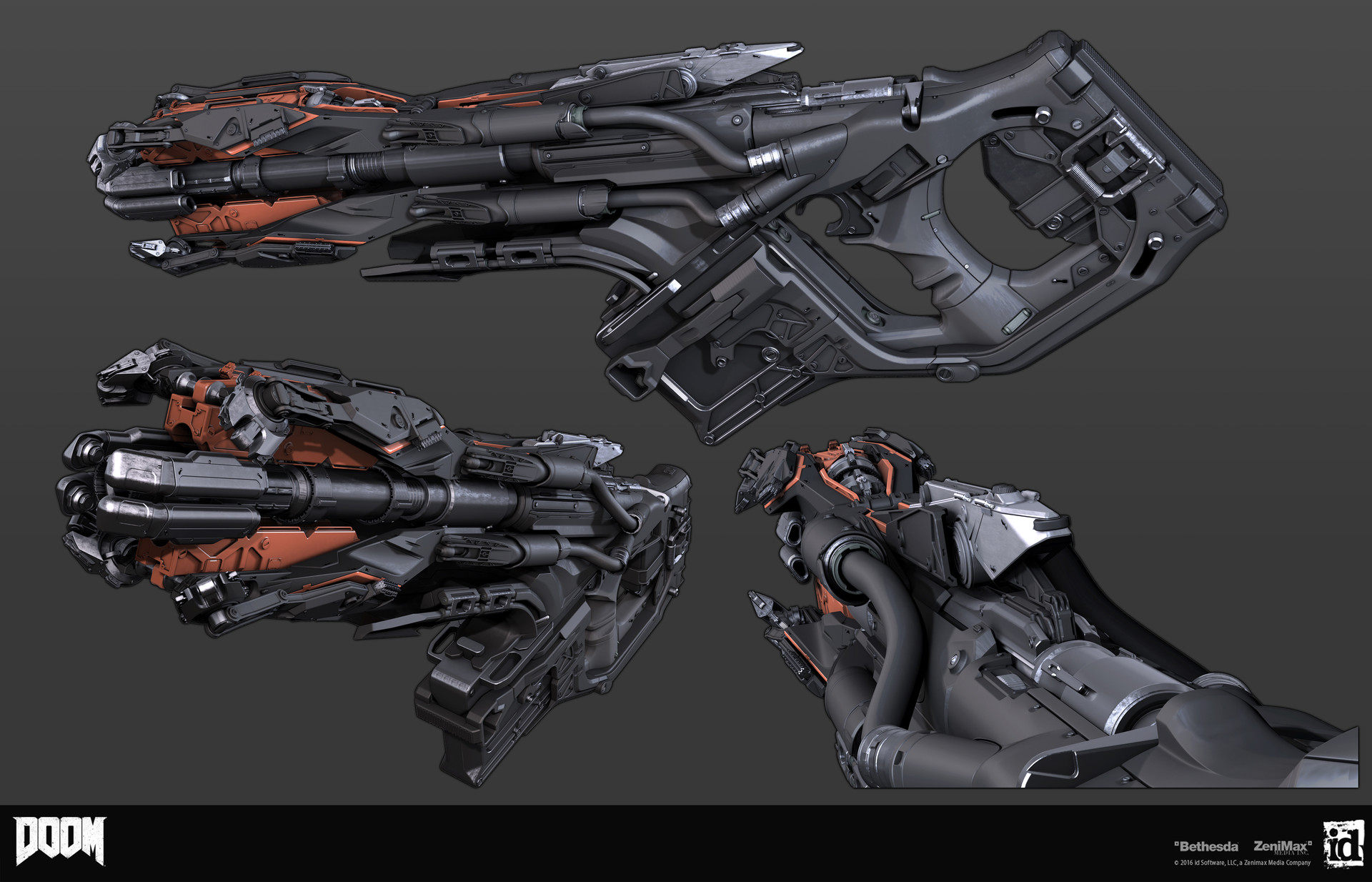
My name is Gregor Kopka . I got into the development of 3D games in the late nineties. My friends and I participated in the modscene and worked on the Quake III mod called “Navy Seals Covert Operations”. In fact, this was my first experience in creating game resources for the engine. I was engaged in characters and weapons and absolutely did not understand what I was doing! But gradually my friends and I learned all that was necessary. This serious work was a success thanks to the support of each other. In addition, we managed to achieve a larger goal - to create our own company. At the university where I studied design, I continued to study 3D graphics and superficially mastered the graphics for films. In those days, the quality of my work was much lower than what even children are capable of today, simply because the only source of knowledge at that time was expensive books entirely devoted to the creation of spheres in 3ds Max . Today it’s enough to go to YouTube or ArtStation to learn how to work optimally, learn from the experience of other users and be inspired by a huge selection of stunning 3D graphics.
Having received the diploma of the designer, I began to look for work. My friend Ben Bower, one of the initiators of our Quake III mod, suggested that I try to get a job at the company Crytek, in which he worked. I passed several tests and received the post of props artist, which allowed me to work on weapons and props in Crysis . At first this work was very difficult for me! I still didn’t really understand what I was doing, but gradually I received a lot of information and developed practical skills, which allowed me to take a new position at Crytek. At this stage of my career, while in Frankfurt, I oversaw the creation of all weapons (my specialty) for all Crytek projects ...
')
I have always experienced uncertainty, working as a production artist, when I had to develop the design of my work myself. Not sure if this is the right way, especially if you like to create concepts, but gaming companies like production artists with design skills - and such a position pays for itself over time. But if in your free time you are not involved in concepts, you will fall behind the best ones (however, this is true in most other cases). Now I am engaged in the improvement of my skills and continue to grow in Nvidia. All this reminds me of the very beginning of my work, when I was an inexperienced developer of 3D games. But thanks to this, I feel young again and always strive to study further.
If you want to better understand what I do, you can visit my page on Artstation .
Guns for Crysis:
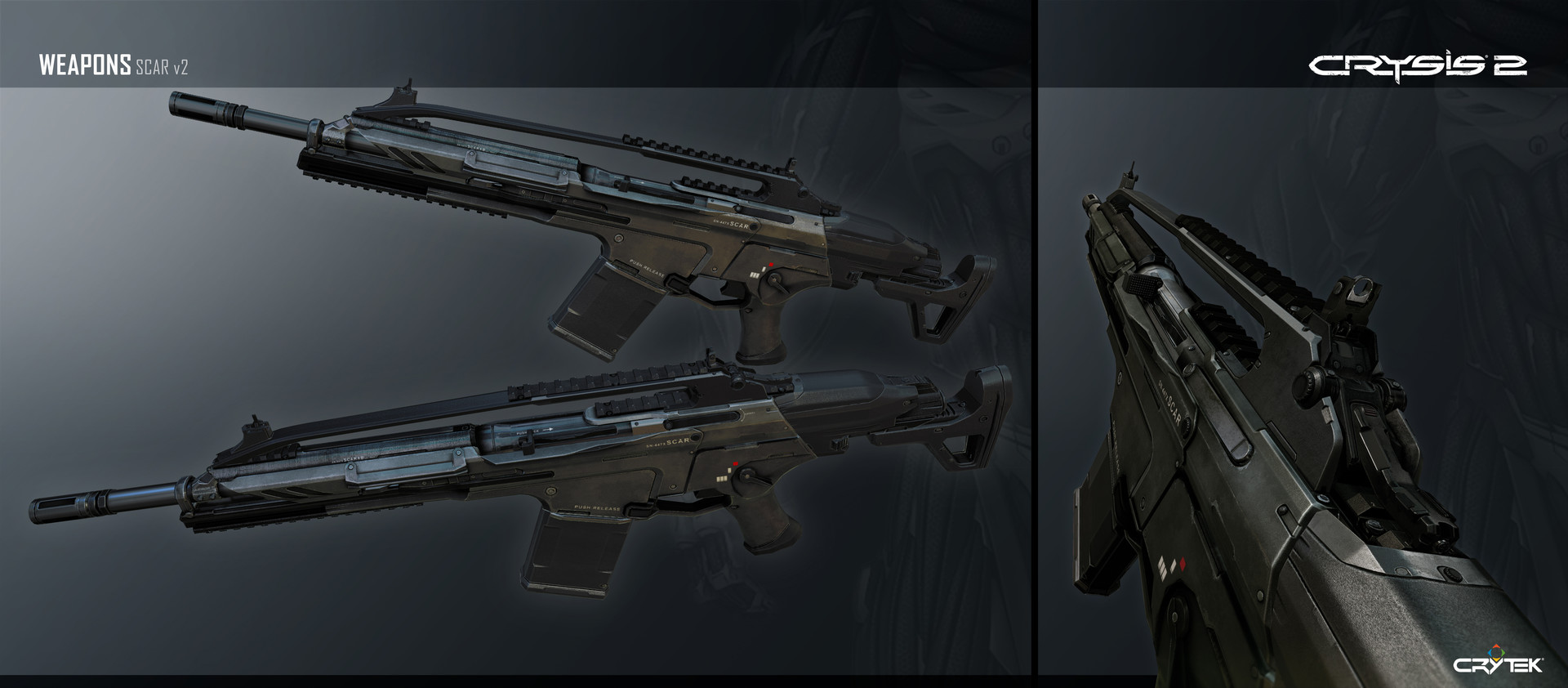
Creating a weapon for Doom was new to me, because in Crytek I defined my own style and created the weapon myself. Turning to Doom , I encountered a new problem: I had to work on a set of weapons with a traditional design, which fell in love with gamers and developers. The style of weapons in Doom was different from what I was used to, that is, from the pseudo-realistic style. Doom cannons are much more massive in shape and inspire a feeling of toughness and brutality.
I came to the company in the later stages of design development, when the style of graphics has already taken shape. I had to adapt to the already existing style given by John Lane, our lead concept artist, and Brian Flynn, another concept artist. I decided to use all my 14 years of experience with the weapon to improve the overall quality and appearance of the weapon in the game. I managed to make my own touches to some types of weapons. When a busy schedule allowed me to make small creative pauses, I was even trusted to develop weapons, for example, Hellshot in multiplayer mode. In addition, I worked closely with Brian Flynn on the implementation of his weapons concerts. The integrity of the process was ensured by frequent meetings, they allowed us to adhere to the spirit of the franchise, which all departments tried to preserve. I saw it by the way my colleagues were satisfied with their work (they are themselves big Doom fans) when we all had to work hard on weapons.
Doom Weapons:
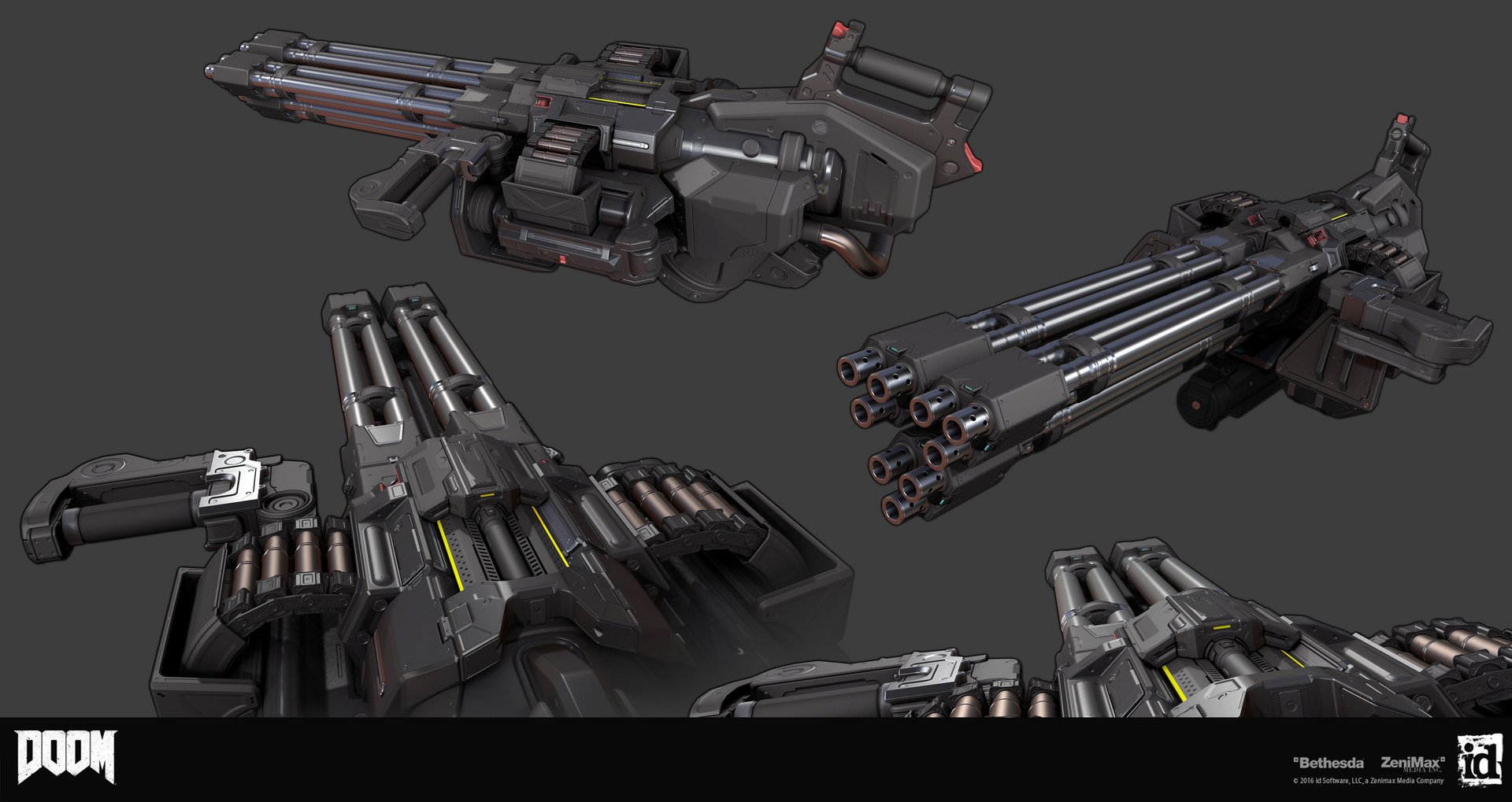

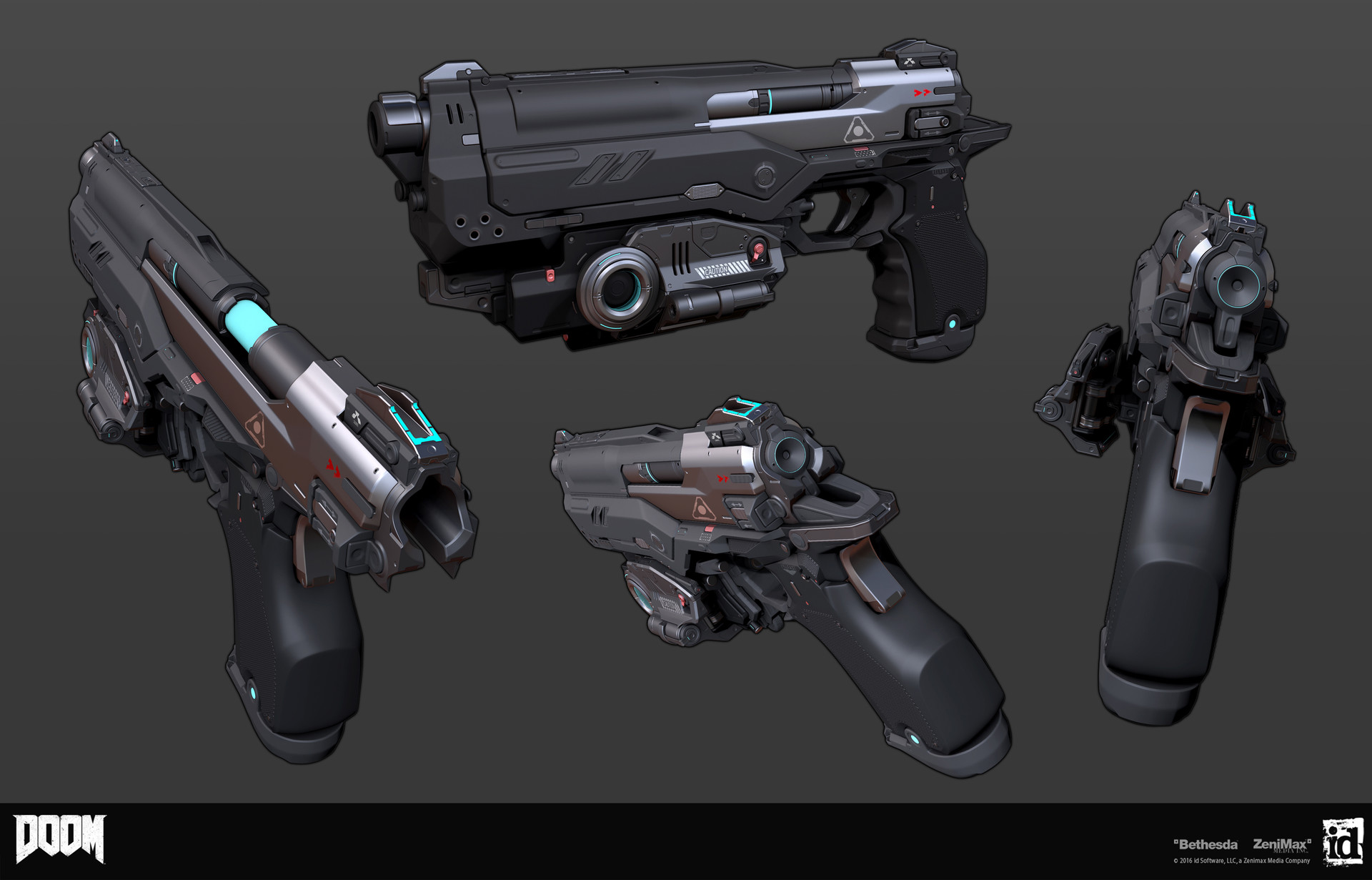

I created sketches, and then I switched to 3ds Max and used his cartoon shader for quick sketches of different ideas. In my head I often had an approximate image of what was to be done, in the form of forms or animations. I used to do a lot of animation for short 3D films and thought that the weapon for FPS is not only the form, but also, more importantly, the sensations of the player who pulls the trigger. I wanted to feel all the coolness of shooting due to high-quality and impressive animation.
My parents are engineers, so I come to work very systemically. The first images of weapons are very rough and are needed only to determine the animation. As soon as I start to like the result and I feel the power of the weapon in the game, I give the model to the animators and designers. Then I start to improve the form and run the game tests. First, I want the weapon mechanically to look convincing and powerful. It is very important to add guns to the game as early as possible - up to this point the player seems to be walking at random in the dark.
When developing complex science fiction weapons, I use the approach used in the design of mechanisms. A standard assault rifle, like any other artist, I first outline in large, spectacular forms, and then I work through small details.
Below are some sketches and concepts in cartoon shaders:

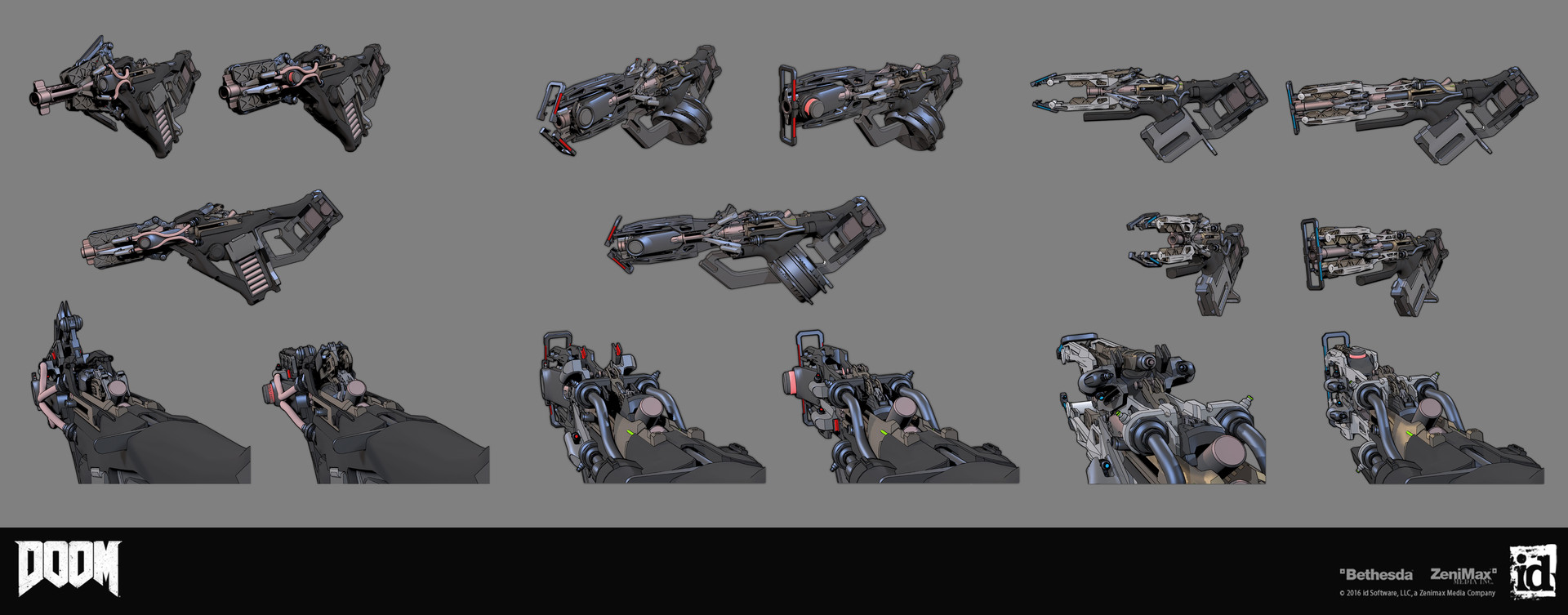

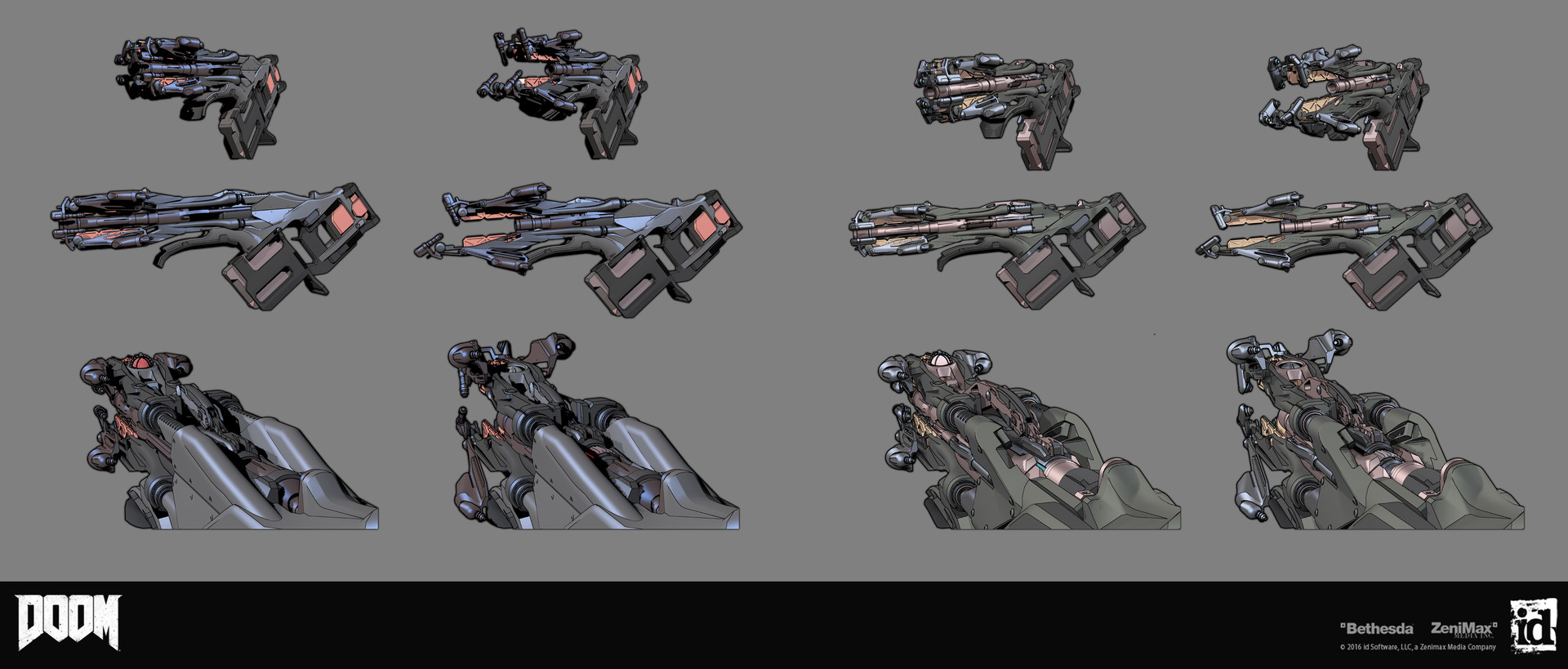
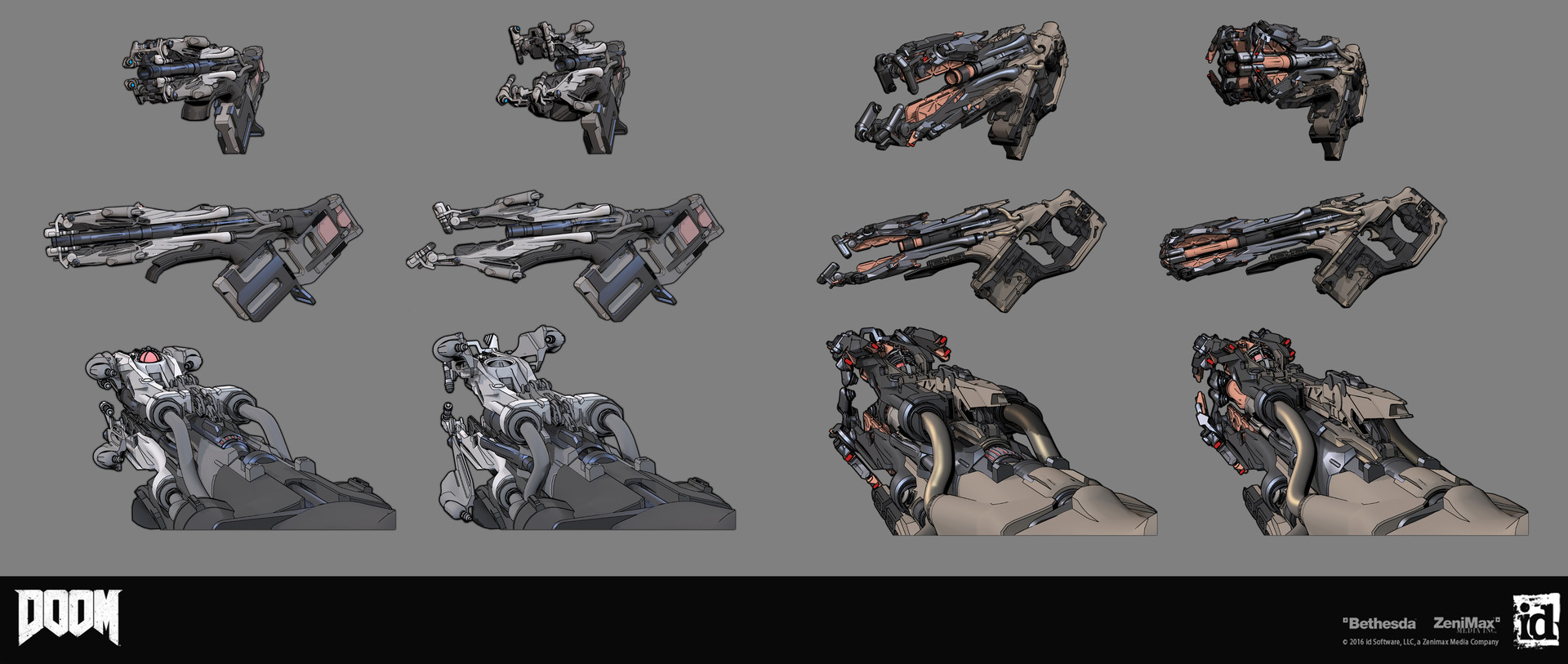
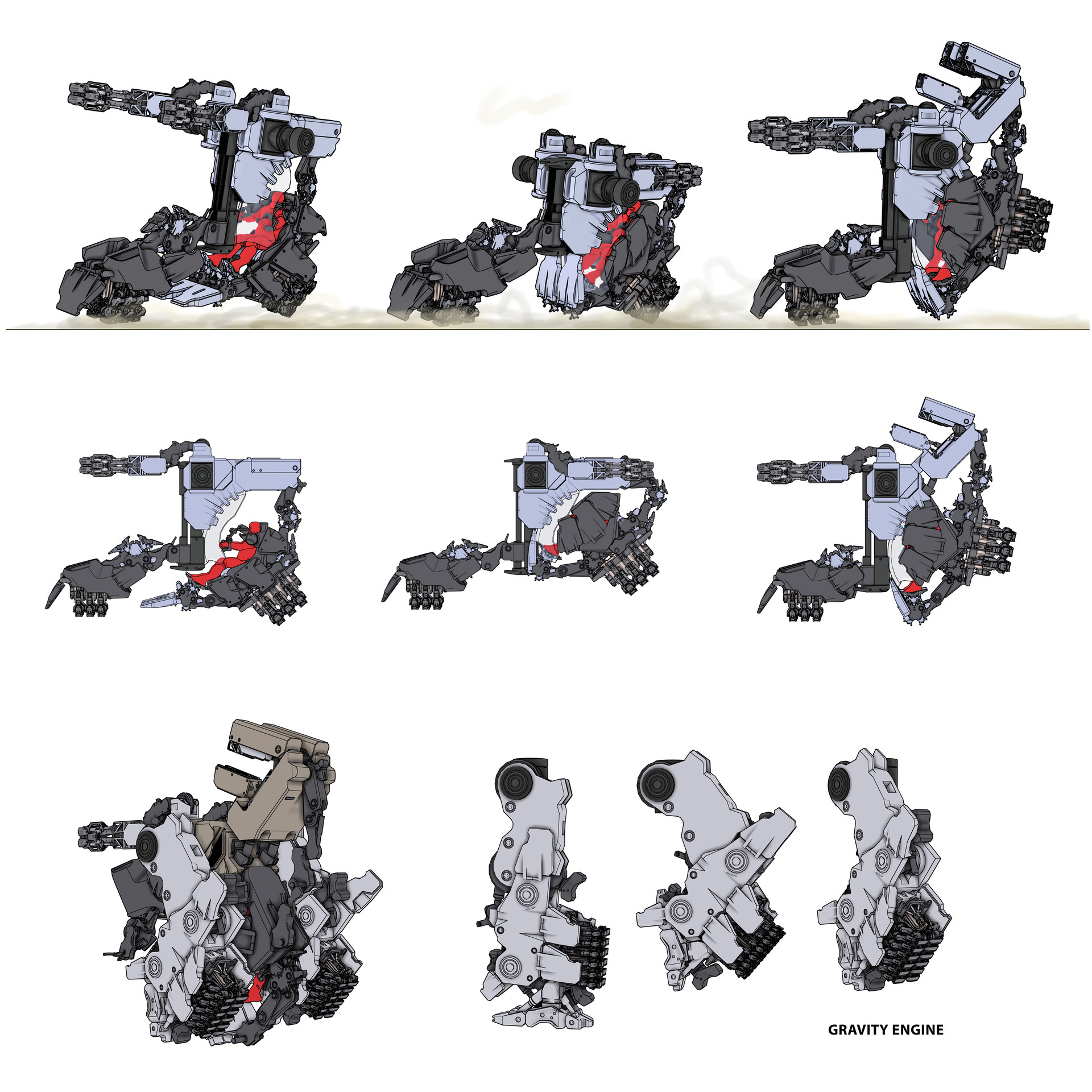
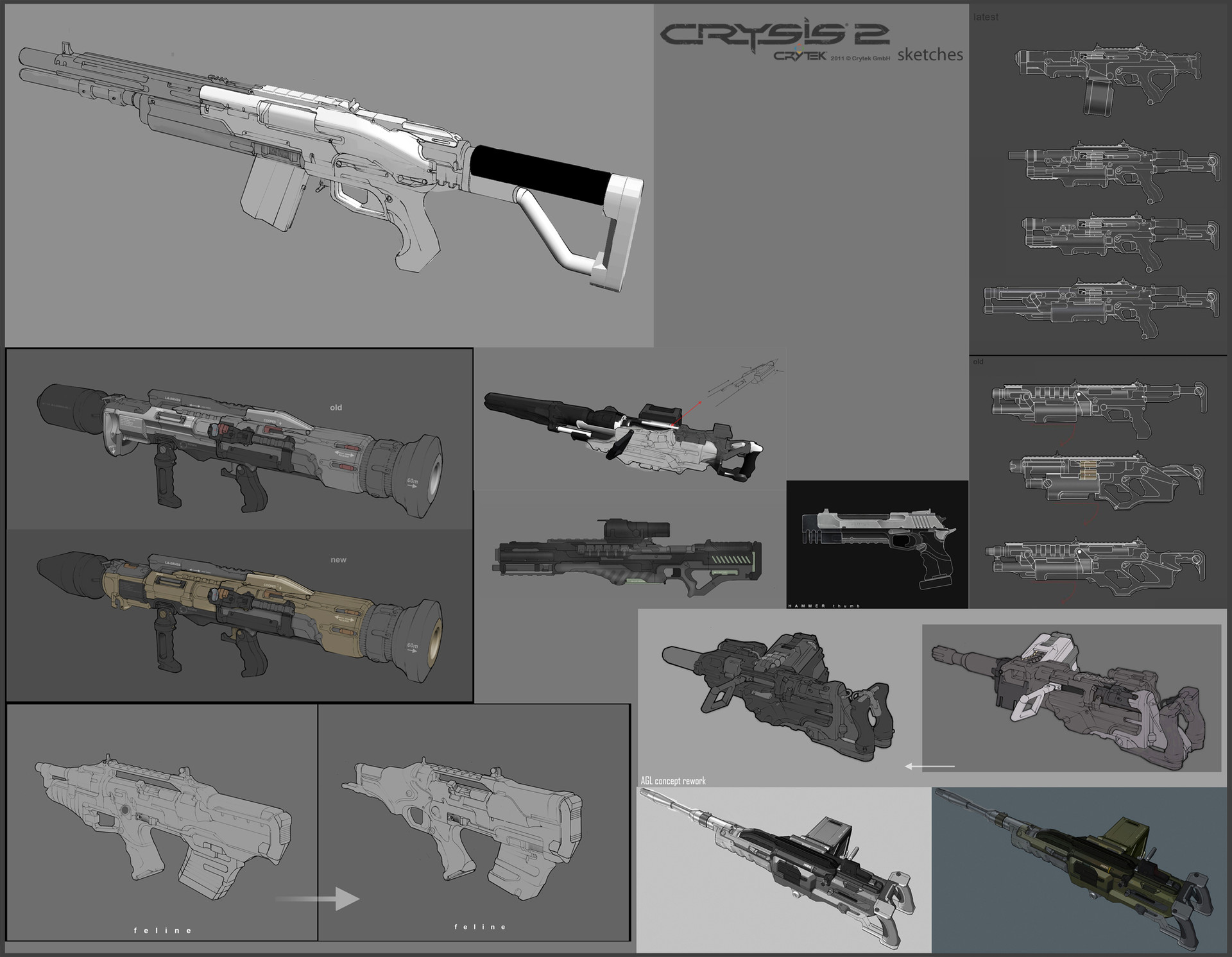
After Crysis 3, I wrote a whole document about it so that other Crytek developers have a guide for future projects. Many conceptual artists should understand that no one cares about the side view - the most important thing in a stretched first-person perspective. Therefore, it is necessary to simulate a weapon for the player, not for an external observer. I often see very detailed weapons with many interesting forms, but when you put them in a first-person camera, they do not leave the desired impression. All interesting details are terribly stretched or even invisible to the player - they are out of sight or the final animation does not support them.
I repeat - in order for your artistic vision to become a reality, and not just an interesting idea, which will be abandoned at the very beginning of development, you need to implement a weapon in the engine as soon as possible. This will allow you to choose the right camera location for the game, which will require communication with animators and a bunch of other departments.
Otherwise, you may even be accused of the fact that the perspective view is not impressive. The main problem is the lack of communication between departments. As a result, we get an ordinary and boring first-person perspective. And the prospect chosen for a game complicates many aspects of game development. Therefore, game developers have to consider options for using MIP texturing, limit the number of polygons and solve other issues so that previous experience will be useful and this stage of development will be successful.
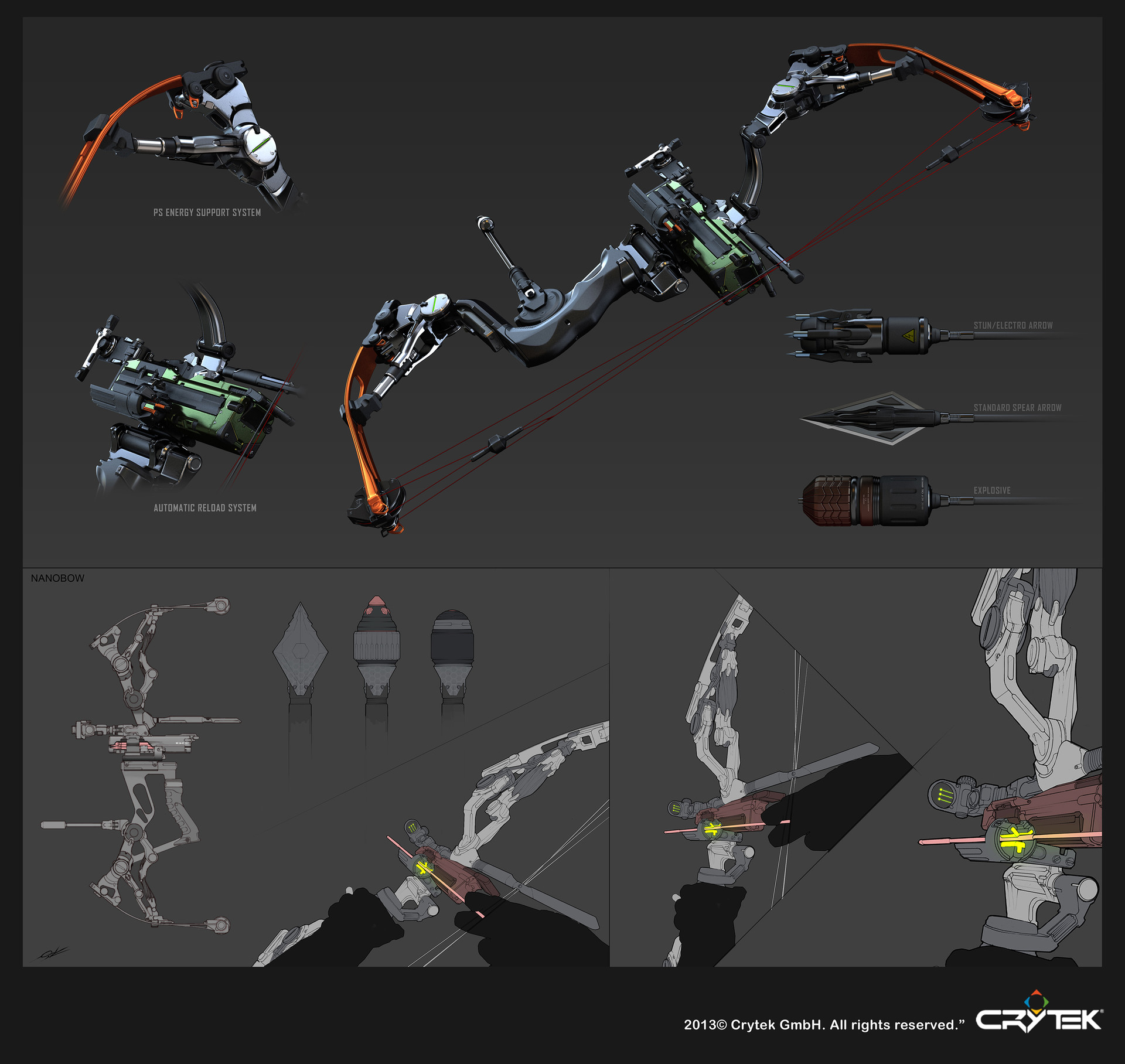

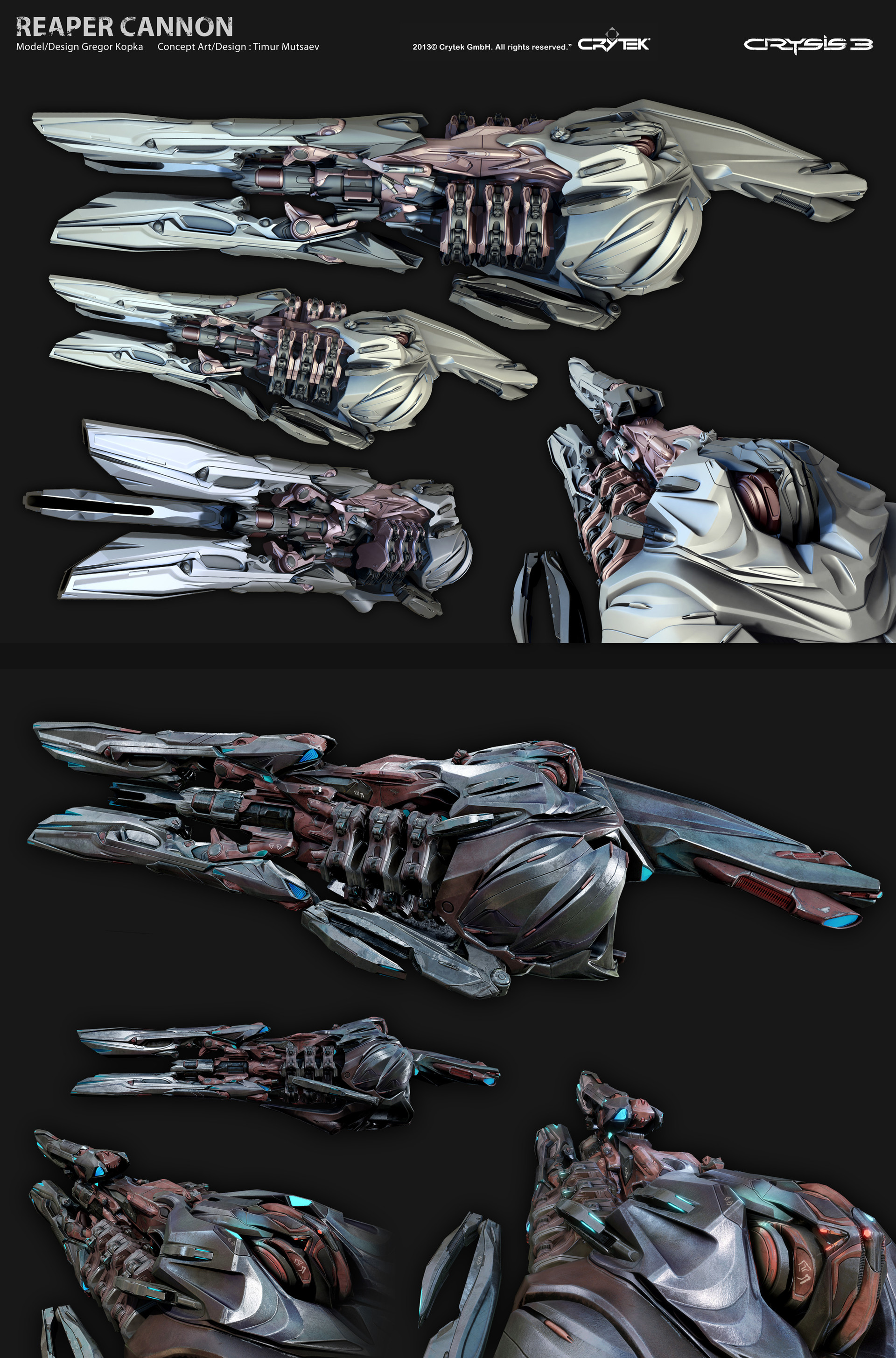
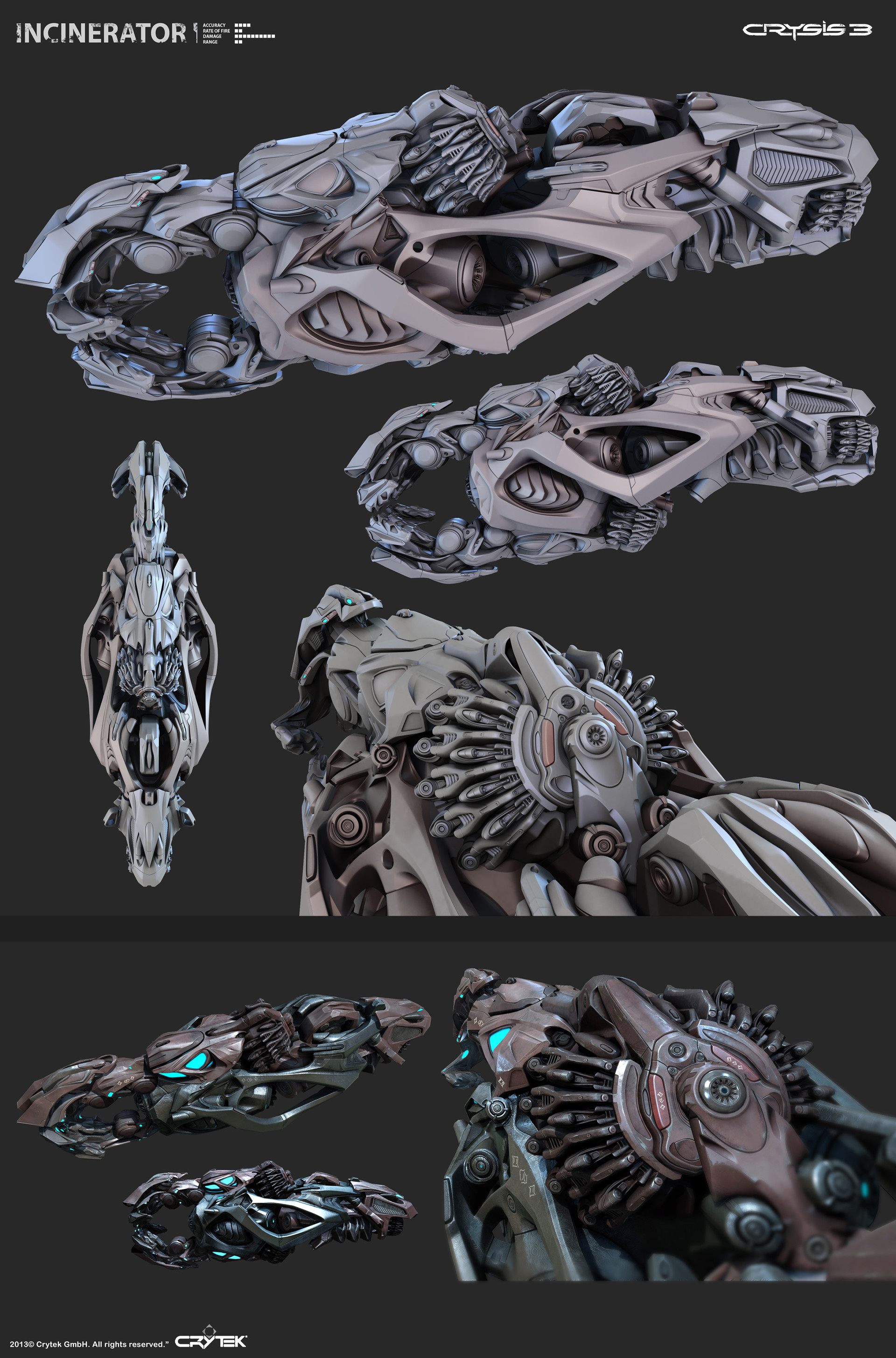
I have already mentioned animation, so now I’ll consider visual effects that are very important. Of course, I already had a vision of a weapon, but it is important to involve the visual effects artist in the early stages so that he is convinced that my idea is technically possible and corresponds to the technology and the grid of the model.
The ideal process for me is to work as closely as possible with all the necessary departments at the same time, including the game design department. It’s great if everyone finds time for group personal meetings so that communication is simple and direct. Although I have my own thoughts on where the weapons should be located, it’s valuable to me how the visual effects and animation artists interpret my thoughts. After all, good weapons are the fruit of collective effort!
Each game has its own technical limitations, and such artists have the experience and knowledge to help them understand how to optimize these aspects of the game engine. And do not forget about the sound! Better convey the nature of the weapon helps high-quality sound design, that is, to realize your vision, you need to start communicating with the sound designer as soon as possible. This is such an important aspect of game design that in large hits, for example, in the Battlefield series, the sound is checked constantly.
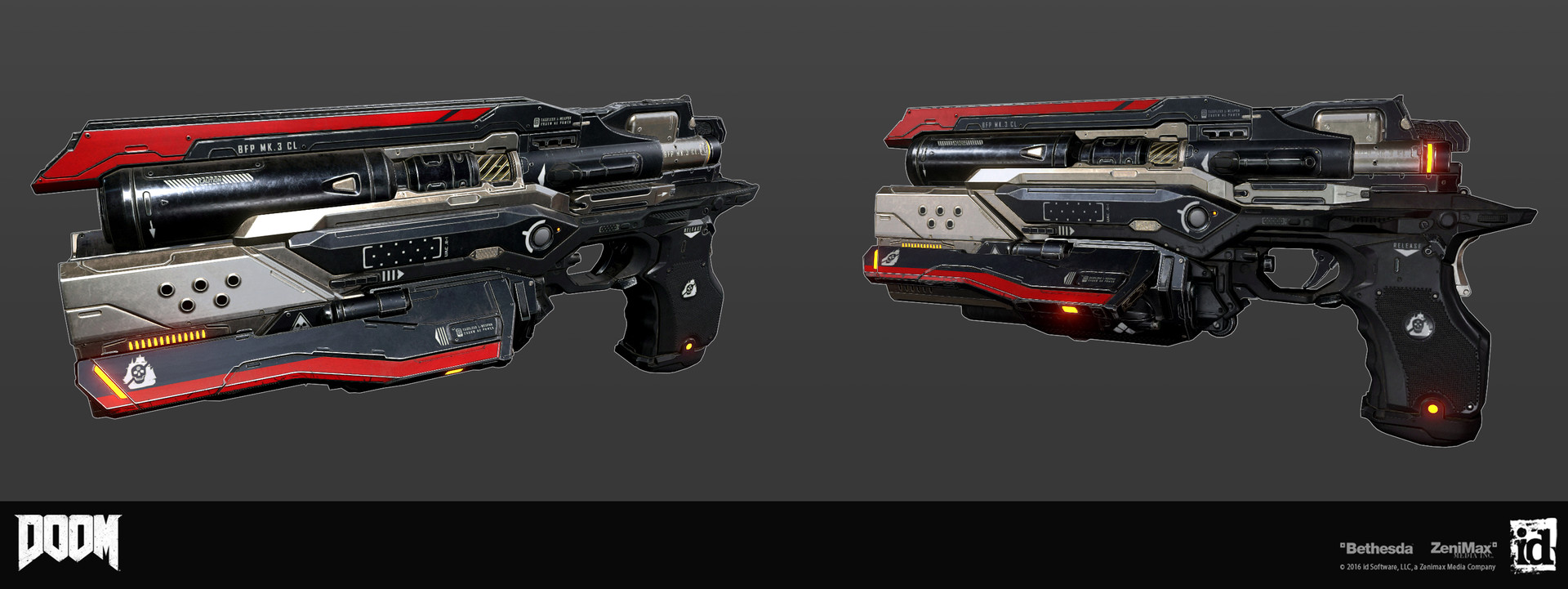
Yes, the main tool in ID is Modo , but I came to the company in the later stages of development and I simply did not have time to study this software. The development schedule required quick work, and I'm pretty quick in 3ds Max. In addition, I was greatly supported by the scripts written by Timothy Iheraman . To speed up my work, he created some of the best internal scripts for 3ds Max, and my gratitude knows no bounds!
I grew up on 3ds Max and it became a familiar tool for me. However, now I have started using different tools for individual tasks. I completely transferred my work with highpoly to Fusion 360 . Sometimes it seems to me that I change my first love, because it’s so convenient to work with him, the quality of the package is high in all respects, and the workflow is non-destructive. I also want to emphasize that Fusion 360 has a very useful support team, which is very attentive to the reviews.
Our industry has gone so far that now it’s impossible to impress anyone just with high-quality modeling; we have tools like Fusion 360 that make the process of work very straightforward. Now, professionals and passionate fans of this industry should amaze others with their own design skills. I hope Fusion 360 will gain popularity in the industry - solid modeling in it is implemented just amazing.
But don't get me wrong! With the right scripts, 3ds Max is also a very powerful package. However, competitors are pulled forward and in some cases their tools are more advantageous.
I only used 3D Coat for texturing, because it supports PBR, and I could draw directly on the model and generate procedural materials. In addition, I used it for quick rough work with development.
I switched to it because Efgeni Bischof used it in his work on the characters and the package looked very powerful. Everyone else worked at Quixel , but this is definitely not my choice. Now I have switched to Substance , because the features I liked have appeared in it, but I still don't have enough important functions to work.
Textured in 3D-Coat:

I am attracted to movement and believable mechanics because it is a solid foundation for design. In short, I do not like static guns! Perhaps my love for mechanisms of this type comes from my long experience in the industry and the constant search for ways of an interesting workflow.
Most of all I like it when the energy of an explosion of a bullet is transmitted through the barrel, passes the receiver back and goes straight to the brain! In this sense, I think as an animator, and I try to convey the feeling of a blow going through mechanics and an impression of power. I hope my work stands out from the rest thanks to this concentration on mechanics.
For some, this will be a very strange way of working with concepts, because their brains do not process information like mine. But it fits me perfectly and I love to create great content in this style.
Personal project:
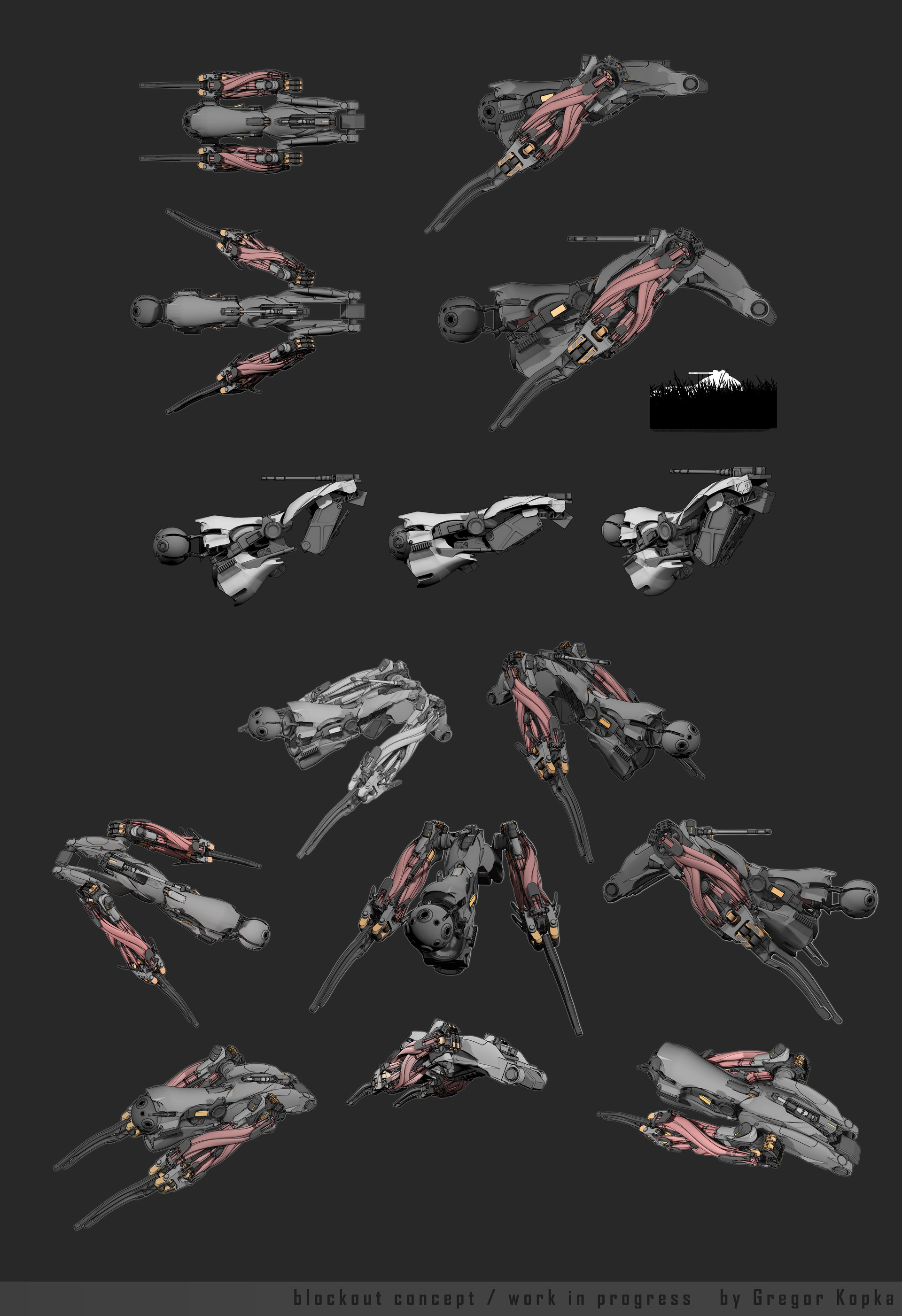
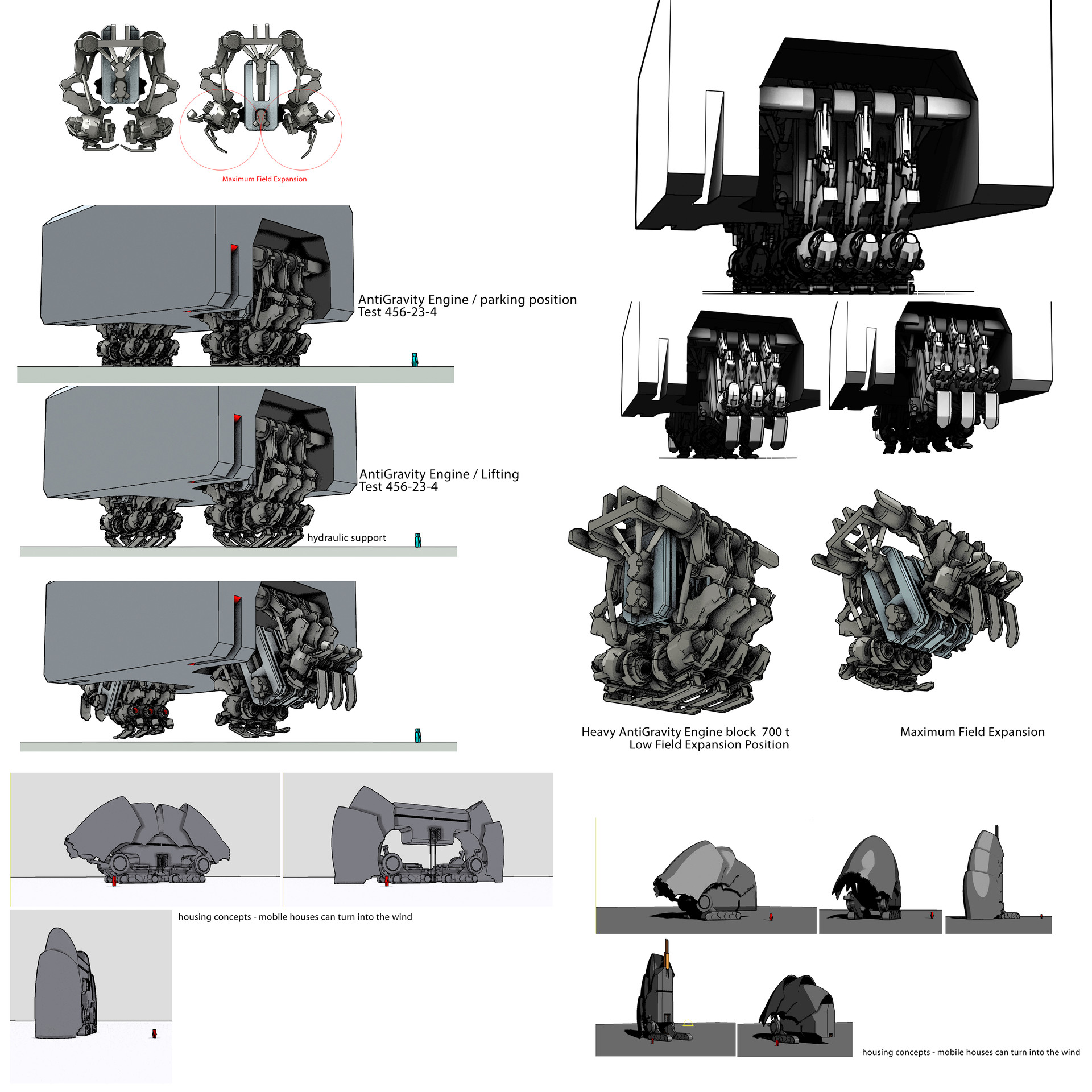
3D artist Gregor Kopka
The interview was taken by Cyril Tokarev .

Introduction
My name is Gregor Kopka . I got into the development of 3D games in the late nineties. My friends and I participated in the modscene and worked on the Quake III mod called “Navy Seals Covert Operations”. In fact, this was my first experience in creating game resources for the engine. I was engaged in characters and weapons and absolutely did not understand what I was doing! But gradually my friends and I learned all that was necessary. This serious work was a success thanks to the support of each other. In addition, we managed to achieve a larger goal - to create our own company. At the university where I studied design, I continued to study 3D graphics and superficially mastered the graphics for films. In those days, the quality of my work was much lower than what even children are capable of today, simply because the only source of knowledge at that time was expensive books entirely devoted to the creation of spheres in 3ds Max . Today it’s enough to go to YouTube or ArtStation to learn how to work optimally, learn from the experience of other users and be inspired by a huge selection of stunning 3D graphics.
Having received the diploma of the designer, I began to look for work. My friend Ben Bower, one of the initiators of our Quake III mod, suggested that I try to get a job at the company Crytek, in which he worked. I passed several tests and received the post of props artist, which allowed me to work on weapons and props in Crysis . At first this work was very difficult for me! I still didn’t really understand what I was doing, but gradually I received a lot of information and developed practical skills, which allowed me to take a new position at Crytek. At this stage of my career, while in Frankfurt, I oversaw the creation of all weapons (my specialty) for all Crytek projects ...
')
I have always experienced uncertainty, working as a production artist, when I had to develop the design of my work myself. Not sure if this is the right way, especially if you like to create concepts, but gaming companies like production artists with design skills - and such a position pays for itself over time. But if in your free time you are not involved in concepts, you will fall behind the best ones (however, this is true in most other cases). Now I am engaged in the improvement of my skills and continue to grow in Nvidia. All this reminds me of the very beginning of my work, when I was an inexperienced developer of 3D games. But thanks to this, I feel young again and always strive to study further.
If you want to better understand what I do, you can visit my page on Artstation .
Guns for Crysis:

Guns for DOOM
Creating a weapon for Doom was new to me, because in Crytek I defined my own style and created the weapon myself. Turning to Doom , I encountered a new problem: I had to work on a set of weapons with a traditional design, which fell in love with gamers and developers. The style of weapons in Doom was different from what I was used to, that is, from the pseudo-realistic style. Doom cannons are much more massive in shape and inspire a feeling of toughness and brutality.
I came to the company in the later stages of design development, when the style of graphics has already taken shape. I had to adapt to the already existing style given by John Lane, our lead concept artist, and Brian Flynn, another concept artist. I decided to use all my 14 years of experience with the weapon to improve the overall quality and appearance of the weapon in the game. I managed to make my own touches to some types of weapons. When a busy schedule allowed me to make small creative pauses, I was even trusted to develop weapons, for example, Hellshot in multiplayer mode. In addition, I worked closely with Brian Flynn on the implementation of his weapons concerts. The integrity of the process was ensured by frequent meetings, they allowed us to adhere to the spirit of the franchise, which all departments tried to preserve. I saw it by the way my colleagues were satisfied with their work (they are themselves big Doom fans) when we all had to work hard on weapons.
Doom Weapons:




Production
I created sketches, and then I switched to 3ds Max and used his cartoon shader for quick sketches of different ideas. In my head I often had an approximate image of what was to be done, in the form of forms or animations. I used to do a lot of animation for short 3D films and thought that the weapon for FPS is not only the form, but also, more importantly, the sensations of the player who pulls the trigger. I wanted to feel all the coolness of shooting due to high-quality and impressive animation.
My parents are engineers, so I come to work very systemically. The first images of weapons are very rough and are needed only to determine the animation. As soon as I start to like the result and I feel the power of the weapon in the game, I give the model to the animators and designers. Then I start to improve the form and run the game tests. First, I want the weapon mechanically to look convincing and powerful. It is very important to add guns to the game as early as possible - up to this point the player seems to be walking at random in the dark.
When developing complex science fiction weapons, I use the approach used in the design of mechanisms. A standard assault rifle, like any other artist, I first outline in large, spectacular forms, and then I work through small details.
Below are some sketches and concepts in cartoon shaders:







Perspective and camera rotation
After Crysis 3, I wrote a whole document about it so that other Crytek developers have a guide for future projects. Many conceptual artists should understand that no one cares about the side view - the most important thing in a stretched first-person perspective. Therefore, it is necessary to simulate a weapon for the player, not for an external observer. I often see very detailed weapons with many interesting forms, but when you put them in a first-person camera, they do not leave the desired impression. All interesting details are terribly stretched or even invisible to the player - they are out of sight or the final animation does not support them.
I repeat - in order for your artistic vision to become a reality, and not just an interesting idea, which will be abandoned at the very beginning of development, you need to implement a weapon in the engine as soon as possible. This will allow you to choose the right camera location for the game, which will require communication with animators and a bunch of other departments.
Otherwise, you may even be accused of the fact that the perspective view is not impressive. The main problem is the lack of communication between departments. As a result, we get an ordinary and boring first-person perspective. And the prospect chosen for a game complicates many aspects of game development. Therefore, game developers have to consider options for using MIP texturing, limit the number of polygons and solve other issues so that previous experience will be useful and this stage of development will be successful.




Visual effects and animation
I have already mentioned animation, so now I’ll consider visual effects that are very important. Of course, I already had a vision of a weapon, but it is important to involve the visual effects artist in the early stages so that he is convinced that my idea is technically possible and corresponds to the technology and the grid of the model.
The ideal process for me is to work as closely as possible with all the necessary departments at the same time, including the game design department. It’s great if everyone finds time for group personal meetings so that communication is simple and direct. Although I have my own thoughts on where the weapons should be located, it’s valuable to me how the visual effects and animation artists interpret my thoughts. After all, good weapons are the fruit of collective effort!
Each game has its own technical limitations, and such artists have the experience and knowledge to help them understand how to optimize these aspects of the game engine. And do not forget about the sound! Better convey the nature of the weapon helps high-quality sound design, that is, to realize your vision, you need to start communicating with the sound designer as soon as possible. This is such an important aspect of game design that in large hits, for example, in the Battlefield series, the sound is checked constantly.

Work in 3ds Max and MODO
Yes, the main tool in ID is Modo , but I came to the company in the later stages of development and I simply did not have time to study this software. The development schedule required quick work, and I'm pretty quick in 3ds Max. In addition, I was greatly supported by the scripts written by Timothy Iheraman . To speed up my work, he created some of the best internal scripts for 3ds Max, and my gratitude knows no bounds!
I grew up on 3ds Max and it became a familiar tool for me. However, now I have started using different tools for individual tasks. I completely transferred my work with highpoly to Fusion 360 . Sometimes it seems to me that I change my first love, because it’s so convenient to work with him, the quality of the package is high in all respects, and the workflow is non-destructive. I also want to emphasize that Fusion 360 has a very useful support team, which is very attentive to the reviews.
Our industry has gone so far that now it’s impossible to impress anyone just with high-quality modeling; we have tools like Fusion 360 that make the process of work very straightforward. Now, professionals and passionate fans of this industry should amaze others with their own design skills. I hope Fusion 360 will gain popularity in the industry - solid modeling in it is implemented just amazing.
But don't get me wrong! With the right scripts, 3ds Max is also a very powerful package. However, competitors are pulled forward and in some cases their tools are more advantageous.
Texturing 3D Coat
I only used 3D Coat for texturing, because it supports PBR, and I could draw directly on the model and generate procedural materials. In addition, I used it for quick rough work with development.
I switched to it because Efgeni Bischof used it in his work on the characters and the package looked very powerful. Everyone else worked at Quixel , but this is definitely not my choice. Now I have switched to Substance , because the features I liked have appeared in it, but I still don't have enough important functions to work.
Textured in 3D-Coat:

Mechanics
I am attracted to movement and believable mechanics because it is a solid foundation for design. In short, I do not like static guns! Perhaps my love for mechanisms of this type comes from my long experience in the industry and the constant search for ways of an interesting workflow.
Most of all I like it when the energy of an explosion of a bullet is transmitted through the barrel, passes the receiver back and goes straight to the brain! In this sense, I think as an animator, and I try to convey the feeling of a blow going through mechanics and an impression of power. I hope my work stands out from the rest thanks to this concentration on mechanics.
For some, this will be a very strange way of working with concepts, because their brains do not process information like mine. But it fits me perfectly and I love to create great content in this style.
Personal project:


3D artist Gregor Kopka
The interview was taken by Cyril Tokarev .
Source: https://habr.com/ru/post/334874/
All Articles